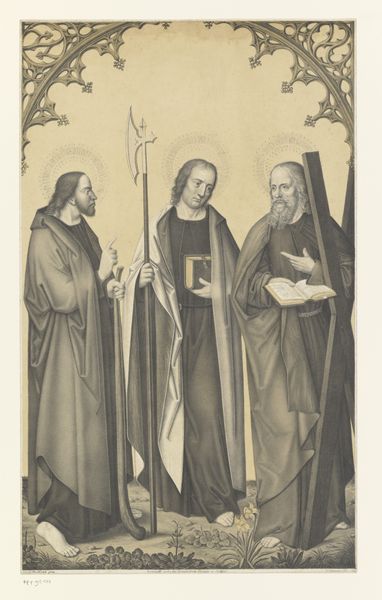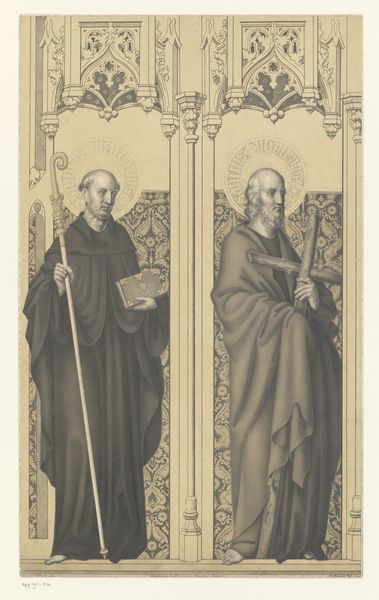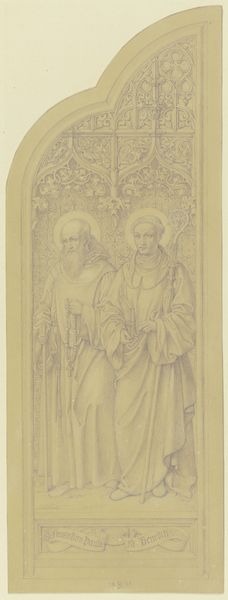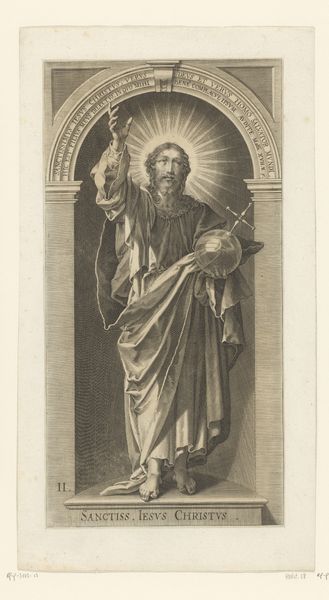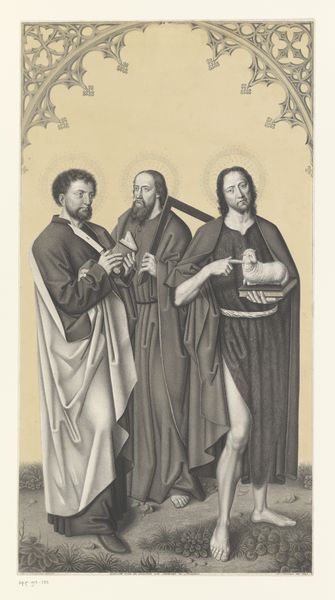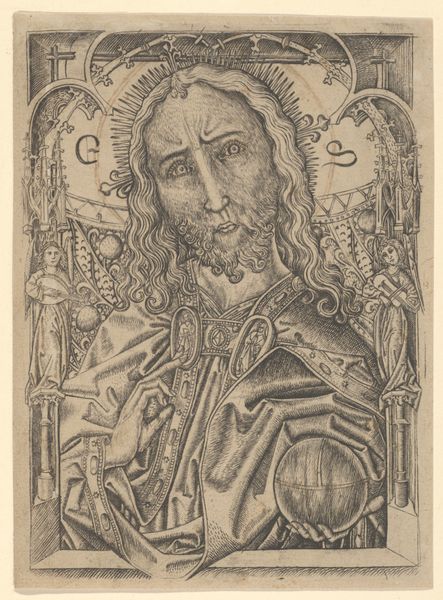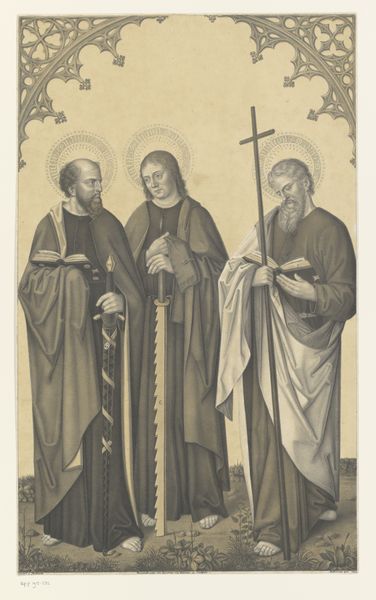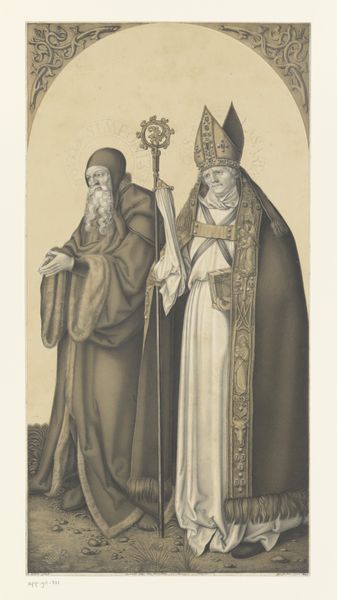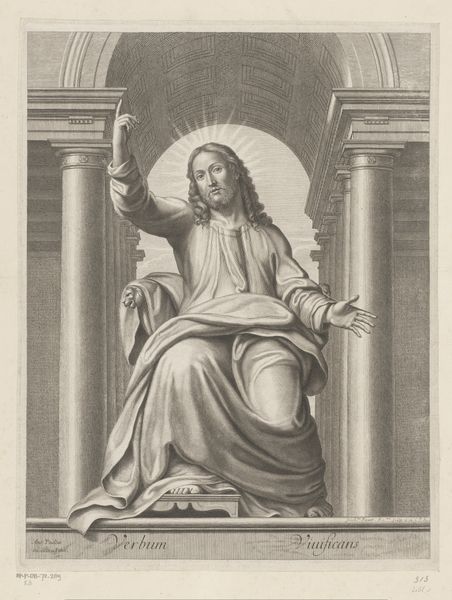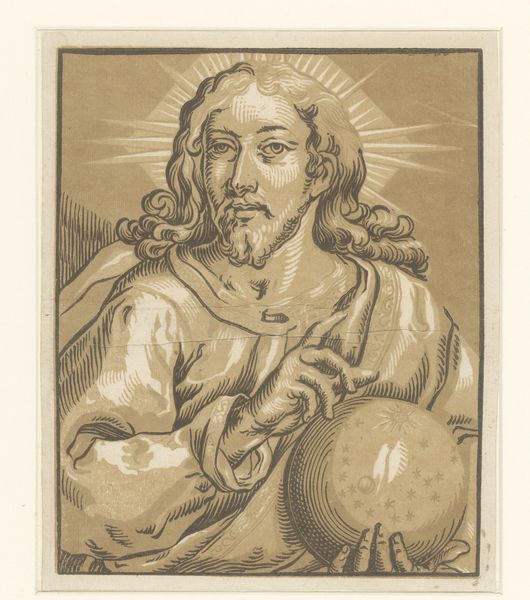
drawing, pencil, graphite
#
portrait
#
pencil drawn
#
drawing
#
medieval
#
pencil sketch
#
caricature
#
pencil drawing
#
pencil
#
graphite
#
portrait drawing
Dimensions: height 572 mm, width 353 mm
Copyright: Rijks Museum: Open Domain
Curator: Before us is Johann Nepomuk Strixner’s 1823 pencil and graphite drawing, "Heilige Mattheus en Jacobus"—or, "Saints Matthew and James." What strikes you immediately? Editor: The starkness, really. It feels stripped down, almost raw in its presentation. Two figures, clearly meant to be imposing, but rendered with a softness that suggests vulnerability. Like they're weary. Curator: I see that weariness too. Strixner, active in the early 19th century, was deeply involved in projects documenting and preserving medieval art. You can almost feel him reaching back, trying to capture that history. Editor: And there's such detail in the gothic-style frames and backdrops. Makes me think about how religious figures were framed—quite literally—for public consumption. This isn’t just about faith; it's about power, institutional power. How the church wanted them seen. Curator: Absolutely, and Strixner grapples with that power, but also honors the spiritual essence, I think. Look at Matthew's book, James’s staff…these aren't just props; they’re symbols of their stories, their journeys. Editor: True. I also notice the sword next to Matthew. Such a strange placement. Is it there as an act of force behind the stories? Curator: Scholars propose that it’s a reference to his martyrdom, or maybe representing the authority given by divine power. In these pairings of the gospel figure Saint Matthew, and Saint James, we’re given reminders of God's protection and the importance of sharing holy wisdoms. Editor: I wonder what Strixner thought about the stories they told? Was he celebrating it, mourning it? Or was he just an agent working on commission to simply preserve? Curator: I get a sense that he felt it. His meticulous, almost loving, attention to detail speaks volumes. But it makes me wonder, with art of this kind in the public domain and freely available for view, do we risk diluting that intention? Is its reverence cheapened in some way? Editor: Hmm, maybe, maybe not. I am thinking that broad access has transformed how society views images of spiritual leadership. And for that I am intrigued with what he sought out to accomplish by freezing these specific figures into an exact image to outlive them. Curator: Exactly. It’s like Strixner gave these saints new life. Thanks for exploring with me. Editor: Thanks for inviting me.
Comments
No comments
Be the first to comment and join the conversation on the ultimate creative platform.
